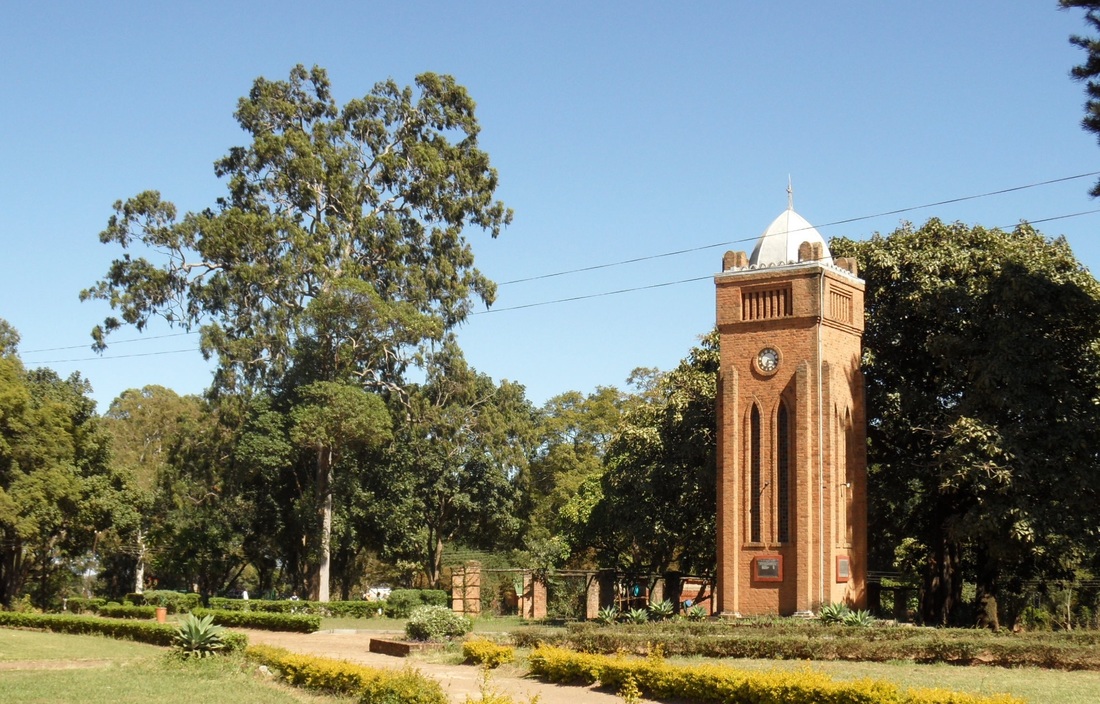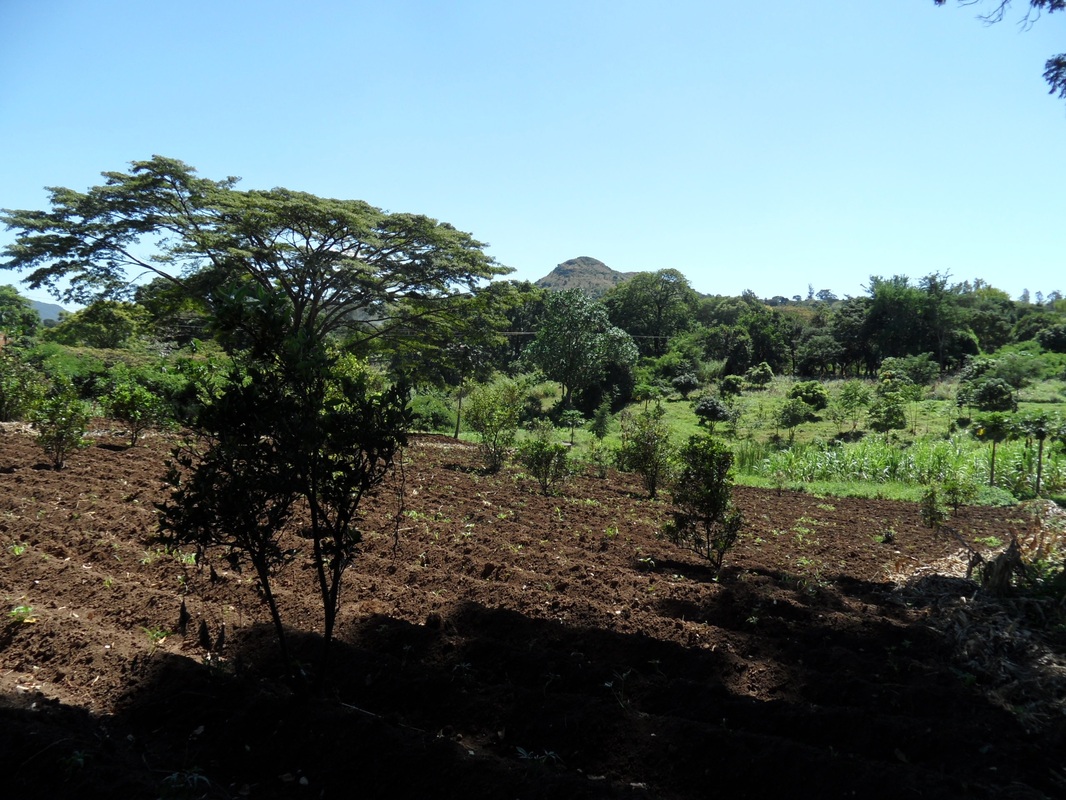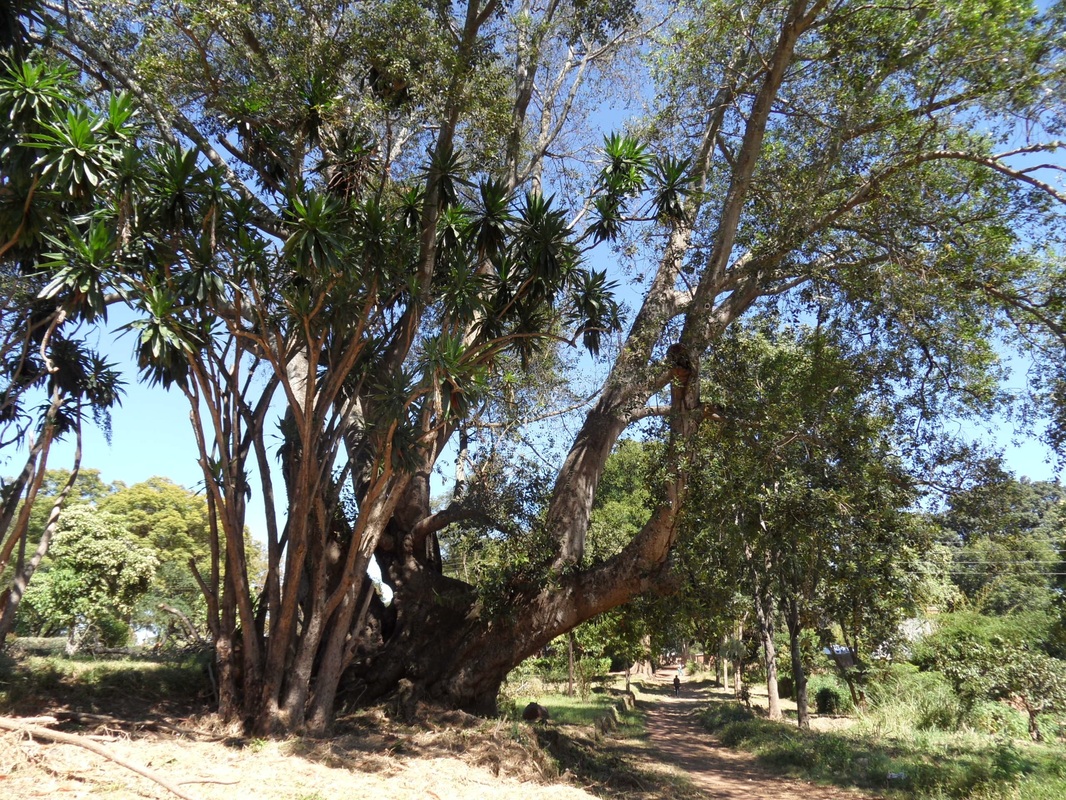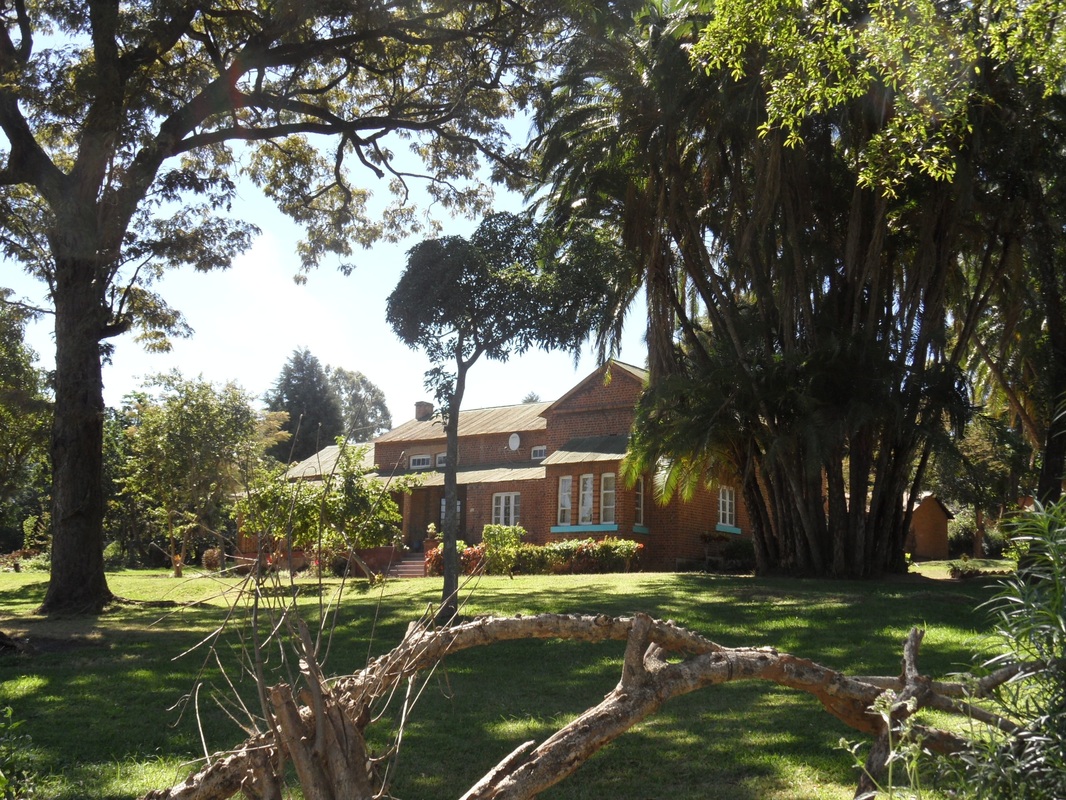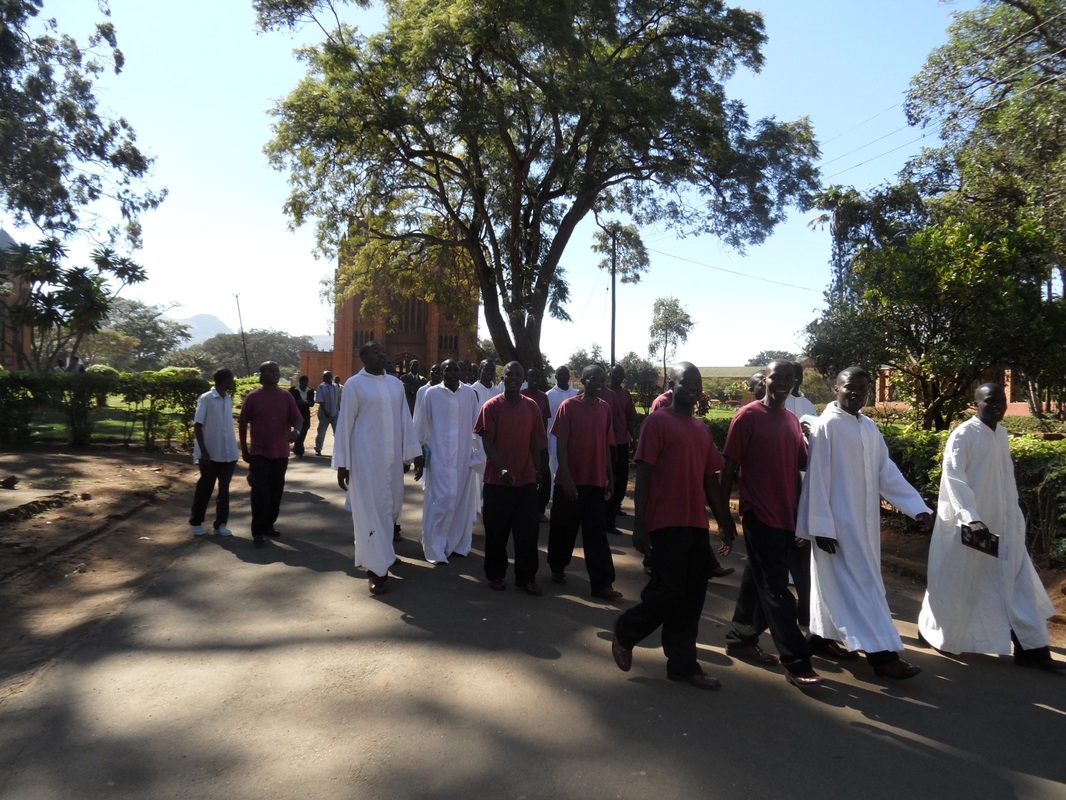History of the Mission Grounds and Gardens
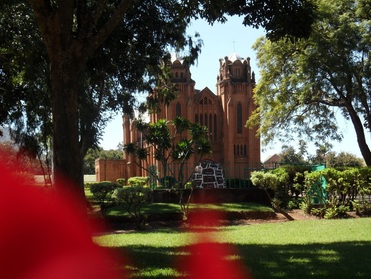
Through the trees to St Michaels.
Mr Stewart, a cousin of Dr Stewart of the Livingstonia Mission (previously a companion of Dr Livingstone himself) laid out the grounds in the very early days of Blantyre Mission.
This page will be updated. In the meantime see the following text from 'The Martyrs of Blantyre' by Rev William Robertson written in 1892.
We pass along an avenue, nearly a mile in length, of tall beautiful Eucalyptus trees (blue gums) planted in 1879, and already many of them sixty feet high, with a clean, well- kept road between them. Passing through these we find ourselves in a large open square, in the centre of which stands a handsome church, just completed, and which by its beauty at once arrests the attention of the traveller and strikes him with astonishment. We pass on in the meantime, however, for we must return and take a leisurely view of it. On one side of the square, on a terraced slope, lies a garden planted with fruit- trees and vegetables, and bright with flowers both European and indigenous. Grouped around the square on its other sides are the school, the Manse, — with its thatched roof and wide verandahs, — the houses of the doctor and the other missionaries, the joiner's work- shop, the smithy, the zinc-roofed store, &c. The square itself is tidy and trim-looking, ornamental trees here and there, while the Manse garden is bright with geraniums, roses, dahlias, and other English flowers, as well as tall shrubs and gay flowering creepers. As we pass along, we hear the ring of the hammer on the anvil and the sound of the carpenter's saw and plane, and we learn that it is the brown Manganja hand that is wielding these. We see numbers of native men and women, clean and tidy-looking in their white calicoes, busy at work in the garden, or " hoeing " in the fields belonging to the Mission farm behind the houses. As we pass through the square we may take a look into the school.
You can read the 'Martyrs of Blantyre' online via this link.
